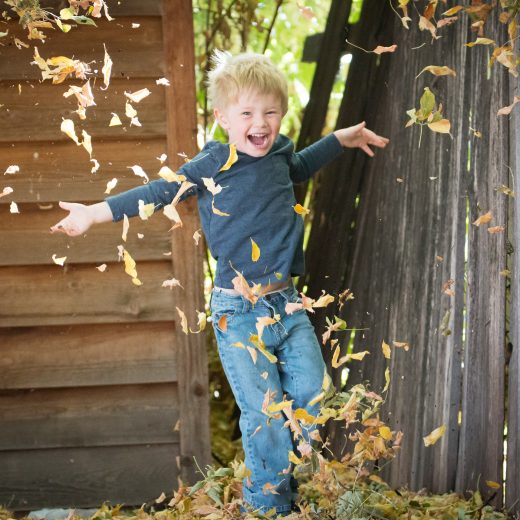I can accept that parenting my kids can be a thankless job; however, watching them respond (or not respond) to others’ kindnesses can really put me on edge. I practically hold my breath when their gratitude is slow to show up. Those two little words, “thank you,” sure can be a relief to hear. While gratitude certainly leaves the person on the receiving end feeling good, there are also amazing benefits to the physical, social and psychological health of the gratitude giver. So, if you came here to read about helping others feel appreciated because it’s polite and kind, then let me stop you right there. This blog is really about revealing something supposedly altruistic as also self-serving– the other reasons to teach your child gratitude.
What is gratitude?
Robert Emmons suggests that gratitude is about both affirming goodness and turning our gaze outward. Specifically, he suggests that gratitude includes “recognizing that one has obtained a positive outcome… and that the sources of this goodness are outside of ourselves.” This might include gratitude for something nature-made, a chance occurence (“thanking my lucky stars”), a gift from God, or from the people around us.
As Emmons goes on to clarify, gratitude also “requires us to see how we’ve been supported and affirmed by other people.” What I love about this explanation is that it’s in support of community care and not just self care. That means showing up for each other and truly embodying the it-takes-a-village mentality to raising children. I am a firm believer that caring for oneself is critical. Yet, I have also felt strongly that parents can feel a lot of shame and isolation when the prevailing message is about self care without also emphasizing community.
Gratitude is also complex. It is defined as a disposition or trait, as well as a mood with daily fluctuations or a temporary emotion such as feeling gratitude immediately after receiving a gift. Yet, it’s not just for humans. Gratitude is felt by several species of animals. For example, some animals may help another at a cost to themselves because they understand, instinctually, that they may be on the receiving end of a favor at a later date.
Why is gratitude important?
Here’s where this blog will really cater to those selfish needs! There are so many ways that being grateful and/or showing gratitude will serve the gratitude giver! Gratitude is associated with:
- Better physical health. For example, various studies have linked gratitude to better sleep, less fatigue, and lower levels of inflammation.
- Better psychological health. Studies have linked gratitude to less depression, less envy and better resilience after a traumatic event.
- Better social health. Research also suggests that individuals who demonstrate higher levels of gratitude are more socially integrated and have better social support. Researchers have described gratitude as a sort of “social glue.”
- Better life satisfaction. Research suggests that more grateful adolescents are more interested and satisfied with their school lives, more engaged in schoolwork and hobbies, and less materialistic.
4 Fun Activities that Teach Your Child Gratitude
Parenting is so much easier when you don’t have children. (Yup, let that sink in.) Yet, finding ways to teach your child gratitude can be really enjoyable. It is true that more dispositionally grateful parents have more grateful children. It’s safe to assume that these parents may be modeling gratitude. We also know that these parents are more likely to place their children in situations that might evoke feelings of gratitude, such as volunteering for people in need. In addition to modeling gratitude here are other fun ways to support gratitude.
- Gratitude Jar: The gratitude jar is a great way to catch each other in shining moments and to revel in those positive moments. Quite simply, you and your family members track daily at least one positive action of each family member. You write it and collect it in a jar and then review it together as a family. It helps family members to refocus attention, particularly if you’ve been in a slump with these family members.
- Gratitude Tales: Telling stories that elicit gratitude or demonstrate an example of gratitude can be a great conversation starter. For example, Aesop’s “Androcles and the Lion” shares the concept of “reciprocal altruism.” That is the idea that Androcles’ kindnes
 s to the injured lion is paid back when the lion later spares Androcles life. There are many other similar stories as well!
s to the injured lion is paid back when the lion later spares Androcles life. There are many other similar stories as well! - Gratitude Letter. The concept includes writing a letter to people you’ve never properly thanked and then delivering the letter. This particular concept was first studied by the founder of the positive psychology movement, Martin Seligman. The effects of the gratitude letter can last more than a month for the writer, particularly when the writer is mature, such as an adolescent or adult.
- Gratitude Journaling. You can also incorporate a regular practice of documenting the moments that evoke gratitude. If you prefer specific prompts for each day of journaling, check out 30 days of gratitude for daily prompts to last a month.
If you’re looking for more ideas, try Big Life Journal’s printable gratitude challenges for children!
At Intuition Wellness Center we specialize in integrated services and wellness programs for children, young adults and families and supporting other like-minded professionals in doing good work. We offer parent education seminars, professional trainings, and other supportive services. If you think you would like some extra support, call us. Call 520-333-3320 for a free phone consultation.


